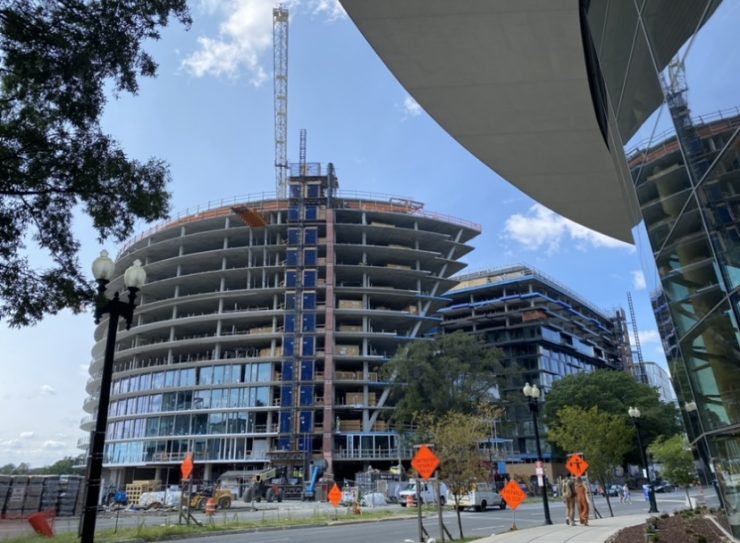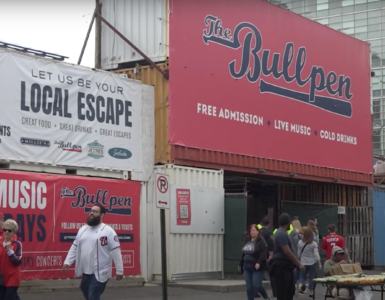As the D.C. Council gears up for a delayed start to the decennial redistricting process, the council is predicting major changes to Ward 6’s boundaries.
Ward 6, which encompasses neighborhoods like Navy Yard, Southwest Waterfront and Buzzard Point, has seen major development over the last decade, leading to a high influx of residents to the ward.
Ward 6’s nearly 40% increase in population within the last decade accounted for almost one-third of the District’s entire population growth, which reached 689,545, according to the 2020 Census report.
Based on estimates from the council, new boundaries to Ward 6 are needed to place at least 17,699 residents in surrounding wards.
The redistricting process
Redistricting, a process that is undertaken by the District every 10 years to rebalance the population in all eight wards, ensuring they each have roughly the same population, will officially begin next month.
The process, which was supposed to begin in April this year, was delayed due to the ongoing COVID-19 pandemic delaying the release of the 2020 Census.
According to Sam Rosen-Amy, the chief of staff for At-Large Councilmember Elissa Silvermann, who sits on the subcommittee for redistricting, rebalancing ensures the constitutional principle of “one person, one vote.”
Rosen-Amy said when rebalancing the wards, the populations inside do not have to be exactly the same, but that they need to be within “plus or minus 5% of the average-sized ward.”
Amanda Farnan, the communications director for At-Large Councilmember Christina Henderson, who also sits on the subcommittee for redistricting, said Councilmember Henderson looks at graphs, among other factors, to also ensure new lines will create equity in political representation.
“For Councilmember Henderson, that really just means looking at black and brown communities and making sure that when we redraw these lines, we’re not diluting the voting power of diverse boards,” Farnan said.
Farnan said the councilmember, along with others on the subcommittee for redistricting, have held hearings to allow the community to voice their concerns for what the new boundaries should be.
“Many people talk about their own neighborhoods and how they want to stay together as a neighborhood,” Farnan said.
She said Esri Redistricting, a platform helping jurisdictions experiment with redistricting lines, created a new interactive map to allow D.C. residents to redraw the lines themselves and send them to the council for consideration.
Ward 6
There are currently 103,197 people in Ward 6, which experienced a 41.9% over the last decade.
“Just to put that into context, the next ward that grew over the last 10 years was Ward 5, which saw about just under 20% increase in population,” said Farnan, the communications director for At-Large Councilmember Christina Henderson.

Farnan attributed several reasons for the explosive growth, including “federal agencies, moving their operations towards Ward 6, and also public private partnerships like The Wharf and the Navy Yard.”
Advisory Neighborhood Committee representative Jared Weiss (SMD 6D02) said the ward’s location on the water and its availability of space for high rise condominiums and apartments are also reasons why the ward has attracted so much growth.
“There’s a synergy between the big projects, the housing, and the geographic location of those neighborhoods that has contributed to the spike in population,” Weiss said.
Farnan and Rosen-Amy both said the process of redistricting does not mean affected individuals will be actually moving, but that their political representation might be changing.
“It just means in total, more than 17,000 people need to be put into a different ward,” Rosen-Amy said.
The ward will get new boundaries to bring it down to “around that sweet spot” of 86,000, Farnan said.
Changes to Ward 6
Advisory Neighborhood Committee representative Jared Weiss (SMD 6D02) said over time, Ward 6’s representation and make-up has changed through redistricting.
“I can tell you that the area covering ANC 6D used to be in Ward 2. And that there was a time in the 1980s when we had nine commissioners,” Weiss said.
While the council has yet to meet on the different possibilities for Ward 6’s new lines, Sam Rosen-Amy, the chief of staff for At-Large Councilmember Elissa Silvermann, said all options are on the table.
“All the borders of Ward 6 could change, that doesn’t mean they are going to, but they all could change. And that’s what we’re trying to get a better understanding of our residents with what changes what they like to see,” Rosen-Amy said.
Rosen-Amy said regardless of how the changes occur, it has to be done this year. “There’s no way around it.”
D.C. Council has started hosting community conversations to discuss possible changes.
The community conversation for Ward 6 will be held Tuesday, Oct. 26 at 8 p.m.
The conversation will be hosted by Ward 6 Councilmember Charles Allen and will include a presentation on the redistricting process by At-Large Councilmember Elissa Silverman.
Prior registration is required and a Zoom link will be provided after.















Add comment